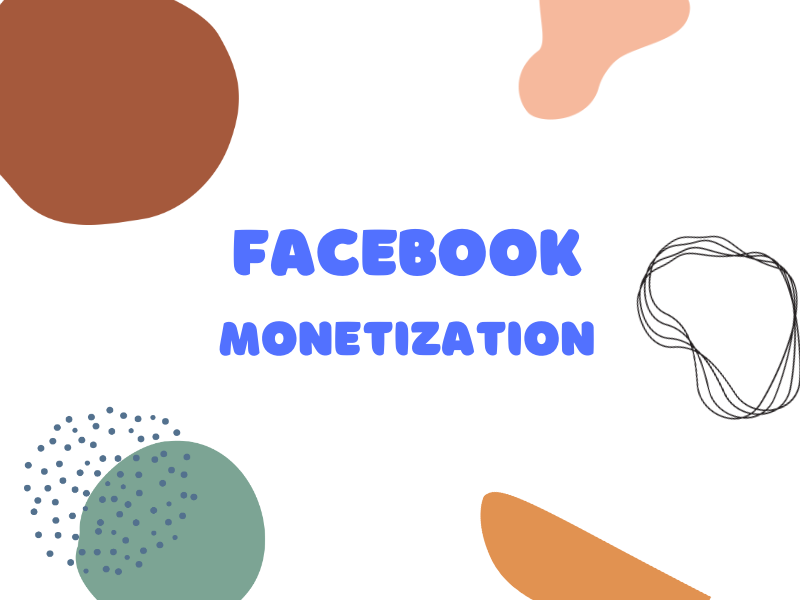Are you curious about how Facebook manages to make billions of dollars in revenue every year? Wondering how the social media giant monetizes its platform without charging users a penny? Well, you’re in the right place. In this article, we will delve into the fascinating world of FB monetization and uncover the hidden strategies behind their financial success. Get ready to discover the secrets that keep Facebook’s cash flow rolling in and learn how your everyday interactions on the platform contribute to its bottom line.
Advertising:
Facebook’s advertising model has been the main driving force behind the company’s revenue growth, making it one of the most profitable digital platforms in the world. With over two billion active monthly users, Facebook offers an enormous reach for advertisers aiming to target specific demographics or interests. This massive user base is a treasure trove of data that Facebook utilizes to deliver highly targeted ads, maximizing their effectiveness and generating substantial revenue.
What sets Facebook apart from traditional media outlets is its ability to provide personalized advertising based on individual user preferences and behavior. Through sophisticated algorithms and machine learning capabilities, Facebook analyzes users’ interactions, likes, comments, and even external website visits to gather valuable data that can be used for ad targeting. This level of customization allows businesses to present advertisements directly to their desired audience segments while minimizing wasted spending on those less likely to convert.
Ad Formats:
Facebook offers a variety of ad formats to advertisers, each with its unique advantages and features.
- One of the most widely used formats is the News Feed Ad, which appears directly in users’ News Feeds as organic content. This format allows advertisers to reach a larger audience and encourages user engagement through likes, comments, and shares.
- Another popular ad format on Facebook is the Carousel Ad. With this format, advertisers can showcase multiple images or videos within a single ad unit. This engaging format enables brands to tell a visual story and capture users’ attention by showcasing their products or services in an interactive manner.
- In addition to these formats, Facebook also offers Video Ads that autoplay when they appear on users’ timelines. These ads are highly effective in capturing user attention due to their dynamic nature, making them an excellent choice for brands looking to convey their message effectively.
Overall, Facebook’s diverse range of ad formats allows advertisers to choose the best option for their specific marketing goals and target audience. By leveraging these formats strategically, businesses can maximize their visibility on the platform and drive meaningful results through Facebook advertising campaigns.
Targeting And Data Collection:
Facebook’s ability to precisely target ads is a result of the vast amount of user data it collects. With over 2.8 billion active monthly users, Facebook has access to an unprecedented wealth of personal information. While most users are aware that Facebook collects data such as age, gender, and location, the platform also tracks interactions with posts, pages liked, and even device information.
But how does Facebook collect all this data? One of the primary ways is through user actions on the platform itself. Every click, like, comment, and share provides valuable insights into a user’s preferences and interests. Additionally, Facebook tracks interactions outside its own platform through tools like the Facebook Pixel, which can be embedded in websites and apps to collect data on user behavior across various platforms.
The implications of this level of data collection go beyond just ad targeting on Facebook. It allows advertisers to create highly customized campaigns that reach their intended audience precisely. However, it also raises concerns about privacy and the ethical use of personal information. As we dive deeper into understanding how Facebook monetizes its platform through targeted advertising, it becomes increasingly important for users to be aware of what data they are sharing and how it is being used by third parties for ad targeting purposes.
Ad Auction And Bidding:
Ad auctions and bidding are crucial components of the advertising world, especially in the realm of digital marketing. With billions of users scrolling through their social media feeds every day, platforms like Facebook have become a goldmine for advertisers wanting to reach their target audience. However, with limited ad space available, how do businesses compete for prime real estate?
The answer lies in an intricate process known as ad auction. When an advertiser wants to display their ads on Facebook, they enter into an auction where they bid against other advertisers who have similar targeting criteria or audiences. The highest bidder wins the auction and gets their ad displayed to their desired audience.
While bidding may seem straightforward, there’s a lot more complexity behind the scenes that determines which ads get shown. Facebook’s algorithm takes into account various factors such as bid amount, ad quality, and user engagement to determine not just the winner but also the relevancy score assigned to each ad.
Payments And Billing:
When it comes to advertising on Facebook, understanding how payments and billing work is key to maximizing your ROI. Facebook offers various options for advertisers to be charged for their ads, depending on their campaign objectives and preferences. The most common method is cost per click (CPC), where advertisers are charged each time a user clicks on their ad. This payment model ensures that advertisers only pay when someone shows interest in their content.
In addition to CPC, another popular option is cost per thousand impressions (CPM), where advertisers are charged based on the number of times their ad is viewed by users. This can be a particularly effective strategy for increasing brand visibility and reaching a wider audience. Billing typically occurs after you accumulate enough charges or reach the billing threshold set for your account.
Facebook also provides various tools that allow advertisers to monitor and manage their spending effectively. Advertisers can set budgets for campaigns to control costs and prevent overspending, as well as use targeting options to ensure they are reaching the right audience with their ads. By understanding payment options and effectively managing budgets, advertisers can make informed decisions that help drive results from their advertising efforts on Facebook.
Conclusion:
In conclusion, Facebook’s monetization process is a diverse and complex system that allows the company to generate substantial revenue through various channels. From advertising to payments and digital goods, Facebook has strategically explored multiple avenues to maximize its earning potential.
One interesting aspect of Facebook’s monetization journey is the emphasis it has placed on user engagement. By offering a platform where people can connect with friends, share experiences, and discover new content, the company has created an environment ripe for advertisers and marketers looking to reach a broad audience. This focus on user engagement not only keeps people coming back but also generates valuable data that can be used for targeted ads.
Additionally, Facebook’s acquisition of popular platforms like Instagram and WhatsApp further expanded its monetization capabilities. These acquisitions allowed Facebook to tap into new demographics and offer advertisers diverse audiences across different social media landscapes.
Overall, Facebook’s monetization process is continuously evolving as the company explores new ways to leverage its massive user base while providing value-added services for businesses. As we enter an increasingly digital world, it will be intriguing to see how this social media giant continues to adapt its strategies and shape the future of online advertising.

